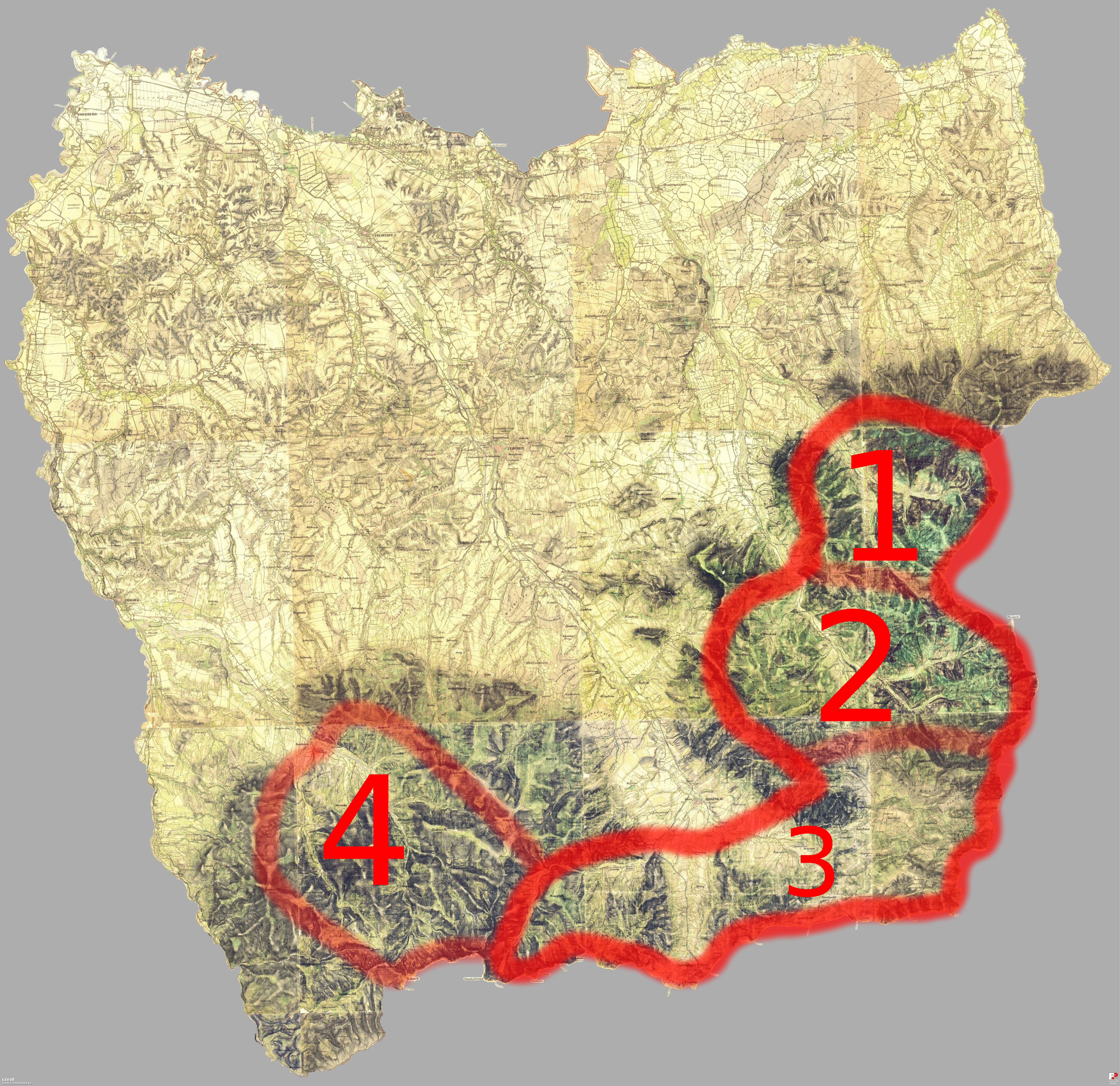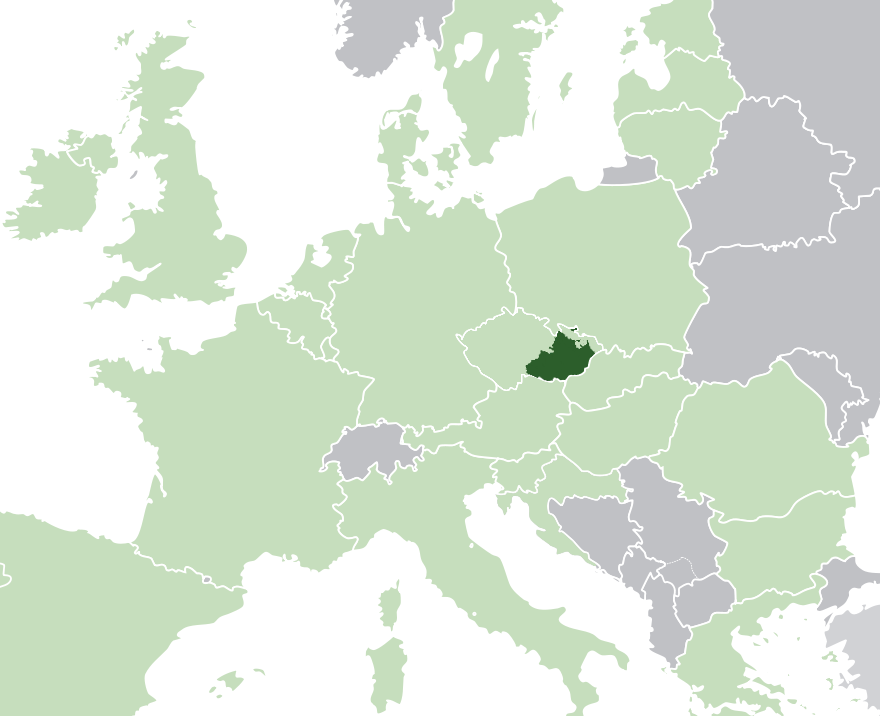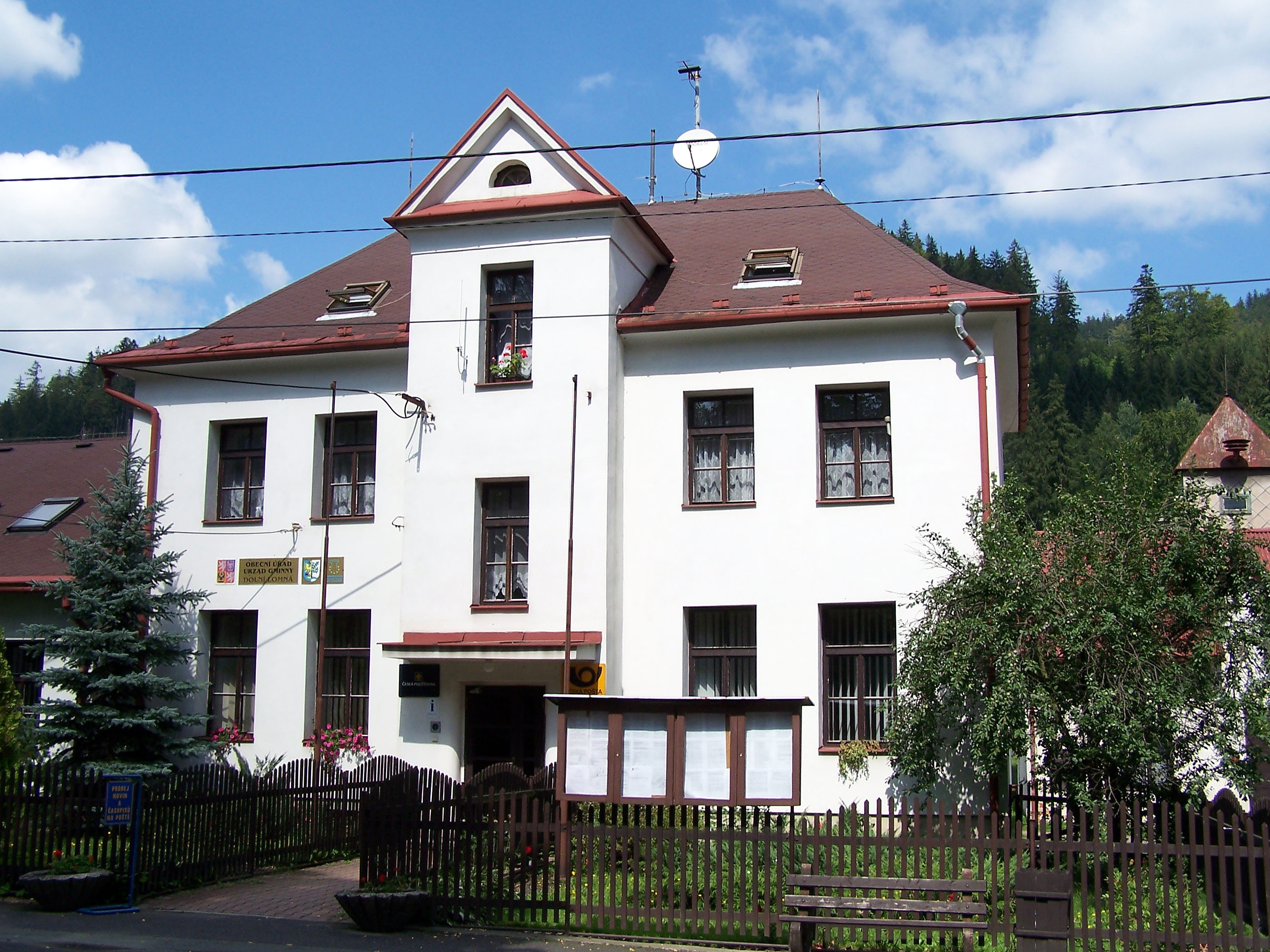|
Silesian Gorals
Silesian Gorals are a subgroup of the Gorals living in the Silesian Beskids and Moravian-Silesian Beskids within the historical region of Cieszyn Silesia. They are one of the four major ethnographic groups of Cieszyn Silesia. History Vlach colonization of the Silesian Beskids began in the late 15th century, roughly around the time when Brenna was first mentioned in 1490. It peaked in the following two centuries. The group shares many cultural traits with other Gorals of the Western Carpathians, stemming from a common way of living from shepherding in mountainous pastures, but they are also characterised by various different cultural and spiritual elements like dialect, beliefs, customs, costume, etc. Wincenty Pol in his survey of Gorals in the middle of the 19th century subdivided Silesian Gorals into four groups: * Breniacy – in Brenna. * Wiślanie – in Wisła. * Jabłonkowianie (Jablunkov Gorals) – in mountain villages around Jablunkov (Polish: Jabłonków) including ... [...More Info...] [...Related Items...] OR: [Wikipedia] [Google] [Baidu] |
Poland
Poland, officially the Republic of Poland, is a country in Central Europe. It extends from the Baltic Sea in the north to the Sudetes and Carpathian Mountains in the south, bordered by Lithuania and Russia to the northeast, Belarus and Ukraine to the east, Slovakia and the Czech Republic to the south, and Germany to the west. The territory has a varied landscape, diverse ecosystems, and a temperate climate. Poland is composed of Voivodeships of Poland, sixteen voivodeships and is the fifth most populous member state of the European Union (EU), with over 38 million people, and the List of European countries by area, fifth largest EU country by area, covering . The capital and List of cities and towns in Poland, largest city is Warsaw; other major cities include Kraków, Wrocław, Łódź, Poznań, and Gdańsk. Prehistory and protohistory of Poland, Prehistoric human activity on Polish soil dates to the Lower Paleolithic, with continuous settlement since the end of the Last Gla ... [...More Info...] [...Related Items...] OR: [Wikipedia] [Google] [Baidu] |
Shepherd
A shepherd is a person who tends, herds, feeds, or guards flocks of sheep. Shepherding is one of the world's oldest occupations; it exists in many parts of the globe, and it is an important part of Pastoralism, pastoralist animal husbandry. Because the occupation is so widespread, many religions and cultures have symbolic or metaphorical references to shepherds. For example, Jesus called himself the Good Shepherd, and ancient Greek mythologies highlighted shepherds such as Endymion (mythology), Endymion and Daphnis. This symbolism and shepherds as characters are at the center of pastoral literature and art. Origins Shepherding is among the oldest occupations, beginning some 5,000 years ago in Asia Minor. Sheep were kept for their milk, their sheep meat, meat and especially their wool. Over the next thousand years, sheep and shepherding spread throughout Eurasia. Henri Fleisch tentatively suggested that the Shepherd Neolithic industry (archaeology), industry of Lebanon m ... [...More Info...] [...Related Items...] OR: [Wikipedia] [Google] [Baidu] |
Moravians (ethnic Group)
Moravians ( or colloquially , outdated ) are a West Slavic ethnic group from the Moravia region of the Czech Republic, who speak the Moravian dialects of Czech or Common Czech or a mixed form of both. Along with the Silesians of the Czech Republic, a part of the population to identify ethnically as Moravian has registered in Czech censuses since 1991. The figure has fluctuated and in the 2011 census, 6.01% of the Czech population declared Moravian as their ethnicity. Smaller pockets of people declaring Moravian ethnicity are also native to neighboring Slovakia. Etymology A certain ambiguity in Czech derives from the fact that it distinguishes between (Bohemia proper) and (Czech Republic as a whole), but the corresponding adjective and noun designating an inhabitant and/or a member of a nation can be related to either of them. The adjective and the noun ('Bohemian') carry only the meaning of a "socially unconventional person". History Moravian tribe The Morav ... [...More Info...] [...Related Items...] OR: [Wikipedia] [Google] [Baidu] |
Pražmo
Pražmo is a municipality and village in Frýdek-Místek District in the Moravian-Silesian Region of the Czech Republic. It has about 900 inhabitants. Geography Pražmo is located about southeast of Frýdek-Místek and southeast of Ostrava, in the historical region of Cieszyn Silesia. It lies mostly in the Moravian-Silesian Beskids, only the northern part lies in the Moravian-Silesian Foothills. The highest point is the Obora mountain at above sea level. The municipality is situated between the Morávka and Mohelnice rivers near their confluence, but none of this rivers flows through the municipal territory. History Pražmo was established in between Raškovice and Morávka in 1777 of the initiative of the owner of the Friedek state country, Jan Nepomuk of Pražma, hence the name of the village. After World War I and fall of Austria-Hungary, it became a part of Czechoslovakia. Demographics Transport There are no railways or major roads passing through the municipality. ... [...More Info...] [...Related Items...] OR: [Wikipedia] [Google] [Baidu] |
Morávka (Frýdek-Místek District)
Morávka (, ) is a municipality and village in Frýdek-Místek District in the Moravian-Silesian Region of the Czech Republic. It has about 1,300 inhabitants. Geography Morávka is located about southeast of Frýdek-Místek and southeast of Ostrava. It lies in the historical region of Cieszyn Silesia, on the border with Slovakia. The municipality lies in the Moravian-Silesian Beskids. The highest point is the Malý Travný mountain at above sea level. The Morávka River originates here and flows across the entire municipal territory. The Morávka Reservoir was built on the river in the municipality in 1961–1967. History Morávka was established in 1615. It was then a part of the Friedek state country that was split from the Duchy of Teschen in 1573, which was a part of the Kingdom of Bohemia. After World War I and fall of Austria-Hungary, it became a part of Czechoslovakia. During World War II, the inhabitants of the municipality took part in the anti-Nazi resistance. In ... [...More Info...] [...Related Items...] OR: [Wikipedia] [Google] [Baidu] |
Krásná (Frýdek-Místek District)
Krásná (, ) is a municipality and village in Frýdek-Místek District in the Moravian-Silesian Region of the Czech Republic. It has about 700 inhabitants. Etymology The name literally means 'nice'. However, the name from derived from the old Slavic word ''krast'' (in modern Czech ''chrást''), which is a designation for leaves from vegetables, beets and similar plants. Geography Krásná is located about southeast of Frýdek-Místek and southeast of Ostrava, in the historical region of Cieszyn Silesia. It lies in the Moravian-Silesian Beskids The Moravian-Silesian Beskids (Czech: , ) is a mountain range in the Czech Republic with a small part reaching to Slovakia. It lies on the historical division between Moravia and Silesia, hence the name. It is part of the Western Beskids within .... The summit of Lysá hora, which is the highest mountain of this range with an elevation of , is located on the western border of the municipal territory. The village is situated in the va ... [...More Info...] [...Related Items...] OR: [Wikipedia] [Google] [Baidu] |
Dolní Lomná
Dolní Lomná (, ) is a municipality and village in Frýdek-Místek District in the Moravian-Silesian Region of the Czech Republic. It has about 900 inhabitants. The municipality has a significant Polish minority. Etymology The name is borrowed from an older name of the Lomná River (mentioned in 1592 as ''Lomny''), which itself is derived from the word ''lom'' ("turn", "bend"). Geography Dolní Lomná is located about southeast of Frýdek-Místek and southeast of Ostrava, in the historical region of Cieszyn Silesia. The municipal territory borders Slovakia on the south. It lies in the Moravian-Silesian Beskids mountain range and within the Beskydy Protected Landscape Area. The highest point is near the top of the Kozubová mountain at above sea level. The Lomná River flows through the municipality. History The settlement on the territory of the village in the Lomná river valley in the Moravian-Silesian Beskids began in the middle of the 17th century. The village was fi ... [...More Info...] [...Related Items...] OR: [Wikipedia] [Google] [Baidu] |
Písek (Frýdek-Místek District)
Písek (, ) is a municipality and village in Frýdek-Místek District in the Moravian-Silesian Region of the Czech Republic. It has about 1,900 inhabitants. The municipality has a significant Polish minority. Etymology The name of the municipality is of topographic origins and literally means "sand". Historically it has been scribed as ''Piesek'' (1523), ''Pisek'' (1577, 1621), ''Pyßek''/''Pioßek'' (1643), ''Piasek'' (1652) and so on. Geography Písek is located about southeast of Frýdek-Místek and southeast of Ostrava. It lies in the historical region of Cieszyn Silesia, a small part of the municipality borders with Poland. The Olza River flows through the municipality. The municipal territory is located on the border between two mountain ranges. The northern part lies in the Silesian Beskids, the southern part lies in the Jablunkov Intermontane. The highest point is the mountain Kyčera/Kiczory on the Czech-Polish border at above sea level. History Písek was establi ... [...More Info...] [...Related Items...] OR: [Wikipedia] [Google] [Baidu] |
Mosty U Jablunkova
Mosty u Jablunkova (until 1949 Mosty; , ) is a municipality and village in Frýdek-Místek District in the Moravian-Silesian Region of the Czech Republic. It has about 3,600 inhabitants. The municipality has a significant Polish minority in the Czech Republic, Polish minority. Etymology The name literally means "bridges near Jablunkov". It is connected with an ancient trade route passing through swamps and marshes in today's territory of the village. They were bridged by wooden beams and logs by the so-called ''mostors'' or ''mościorze'', who gave the village its name. Geography Mosty u Jablunkova is located about southeast of Frýdek-Místek and southeast of Ostrava. It lies in the historical region of Cieszyn Silesia on the border with Slovakia. The village is located in the Jablunkov Pass. The western half of the municipality lies in the Moravian-Silesian Beskids, the eastern part extends to the Jablunkov Intermontane region, and the northern part extends to the Jablunkov Fur ... [...More Info...] [...Related Items...] OR: [Wikipedia] [Google] [Baidu] |
Bukovec (Frýdek-Místek District)
Bukovec (; , ) is a municipality and village in Frýdek-Místek District in the Moravian-Silesian Region of the Czech Republic. It has about 1,400 inhabitants. The municipality has a significant Polish minority. Etymology The name of the village is derived from ''buk'', i.e. "beech". It refers to the beech forests that grew there. Geography Bukovec is located about southeast of Frýdek-Místek and southeast of Ostrava, in the historical region of Cieszyn Silesia. It borders Poland in the east and Slovakia in the south, but the tripoint of the three countries is located outside the municipality. Bukovec is the easternmost municipality of the country and the first municipality in the Czech Republic through which the Olza River flows. The central part of the municipal territory with the village lies in the Jablunkov Furrow. The southern part extends into the Jablunkov Intermontane range and the northern part extends into the Silesian Beskids range. The highest peak of the mu ... [...More Info...] [...Related Items...] OR: [Wikipedia] [Google] [Baidu] |
Istebna
Istebna is a large village and the seat of Gmina Istebna, Cieszyn County in the Silesian Voivodeship, southern Poland. The village is situated in the Silesian Beskids mountain range, near the borders with the Czech Republic and Slovakia, in the historical region of Cieszyn Silesia. The Olza River flows through the village. Etymology The name is cultural in origin, derived from the word , meaning a room in a (especially rural) house (see also izba). It is conjectured that the name was conveyed by settlers from Istebné who supposedly established the village. Historically, it was also known as ''Gistebna'' (1621, 1629) or ''Istebne'' (1724; the name in plural form, meaning ''rooms''). History The village was first mentioned in a 1592 document, which retrospectively mentioned a village called ''Jistebne'' which was around As early as 1583. It belonged then to the Duchy of Teschen, a fee of the Kingdom of Bohemia and a part of the Habsburg monarchy. After the 1848 Revolutions ... [...More Info...] [...Related Items...] OR: [Wikipedia] [Google] [Baidu] |
Jaworzynka
is a village in Gmina Istebna, Cieszyn County in Silesian Voivodeship, southern Poland. The village is situated in the Beskid Śląski mountain range, near Poland's borders with the Czech Republic and Slovakia, in the historical region of Cieszyn Silesia. The village's name is a toponym, deriving from the Polish word for sycamore trees (''jawor'') in its diminuitive form (''jaworzyna''). History The village was first mentioned in 1621 as ''Jaworzinka''. It belonged then to the Duchy of Teschen, a fee of Kingdom of Bohemia and a part of the Habsburg monarchy. After Revolutions of 1848 in the Austrian Empire a modern municipal division was introduced in the re-established Austrian Silesia. The village as a municipality was subscribed to the political district of Cieszyn and the legal district of Jablunkov. According to the censuses conducted in 1880, 1890, 1900 and 1910 the population of the municipality grew from 1,369 in 1880 to 1,642 in 1910 with the majority being native Si ... [...More Info...] [...Related Items...] OR: [Wikipedia] [Google] [Baidu] |




